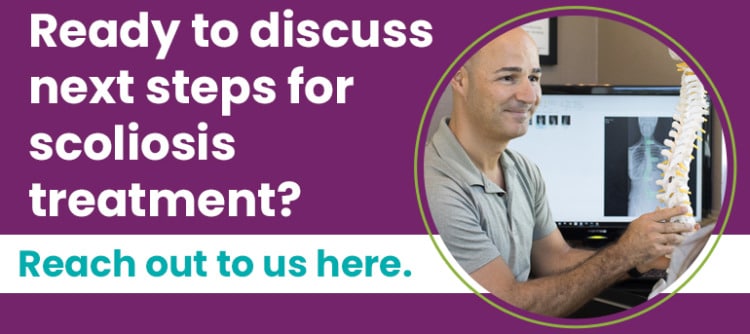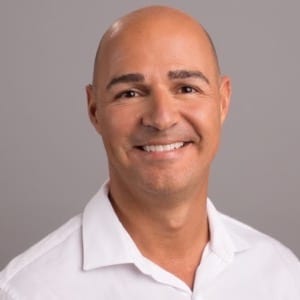Tampa Scoliosis Treatment: Non-Surgical Solutions
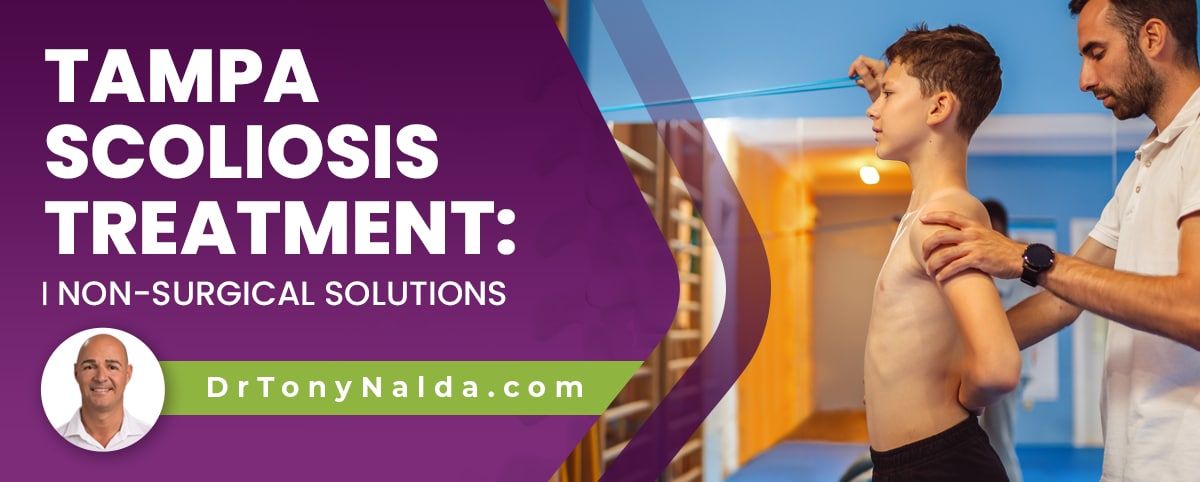
Scoliosis is a complex structural spinal condition that requires a specialized treatment approach. From impacting the condition on a structural level and improving the strength of the spine's surrounding muscles for more support, scoliosis can be highly treatable.
In a 1.5-hour drive, Tampa scoliosis treatment can include Orlando's Scoliosis Reduction Center® and Dr. Tony Nalda's innovative non-surgical treatment approach. From chiropractic care to physical therapy, the Center combines powerful treatment disciplines.
Scoliosis treatment is crucial because as a progressive condition, the nature of scoliosis is to become more severe, and difficult to treat, over time.
Table of Contents
What is Scoliosis?
To understand why scoliosis treatment is so important, we need to explore some condition characteristics that make it complex to treat.
Scoliosis is a structural spinal condition that causes a loss of its healthy curves; while there are a number of conditions that cause a loss of healthy spinal curves, scoliosis also has a rotational component and a number of other unique characteristics.
Scoliosis doesn't just cause the spine to bend unnaturally to the side, but also twist, making it a complex 3-dimensional condition, and there are also different types of scoliosis that can develop.
Different Types of Scoliosis
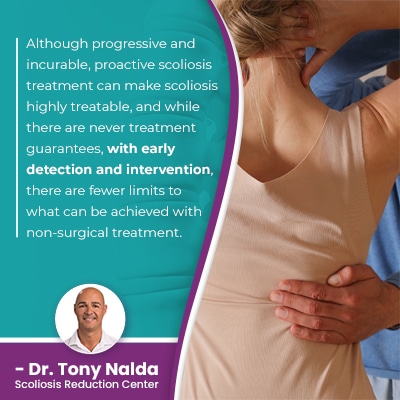 The main type of scoliosis to affect all ages is idiopathic scoliosis, which means no known cause, and approximately 80 percent of diagnosed cases are classified as idiopathic.
The main type of scoliosis to affect all ages is idiopathic scoliosis, which means no known cause, and approximately 80 percent of diagnosed cases are classified as idiopathic.
The remaining 20 percent are associated with known causes and are considered atypical: neuromuscular scoliosis, degenerative scoliosis, and congenital scoliosis.
Idiopathic scoliosis is thought to be multifactorial, meaning caused by a number of variables that can differ from person to person, but what's important to understand is that not knowing the cause of idiopathic scoliosis doesn't mean we don't how to treat it effectively.
Although progressive and incurable, proactive scoliosis treatment can make scoliosis highly treatable, and while there are never treatment guarantees, with early detection and intervention, there are fewer limits to what can be achieved with non-surgical treatment.
Atypical types of scoliosis are more complex to treat, requiring even more of a specialized treatment approach.
For example, in cases of neuromuscular scoliosis, the scoliosis develops as a secondary complication of a more serious neuromuscular condition like spina bifida, muscular dystrophy, and cerebral palsy, and it's the larger neuromuscular condition that is the focus of treatment, complicating the process.
In cases of degenerative scoliosis, the treatment focus is on pain management, preserving spinal function and improving the spine's balance, support, and stability.
Congenital scoliosis is a rare type, affecting approximately 1 in 10,000 babies who have malformed spines that develop in utero.
Not only are there different types of scoliosis, there are also different severity levels.
Severity Levels of Scoliosis
Scoliosis ranges widely in severity, and this is another reason treatment plans need to be fully customized.
Scoliosis can range from mild scoliosis to moderate, severe and very severe scoliosis, and condition severity is determined by a measurement known as Cobb angle, and this is determined during X-ray.
An X-ray is needed to officially diagnose scoliosis: to confirm the rotational component and to determine Cobb angle.
A minimum Cobb angle of 10 degrees is needed to be considered a true scoliosis.
The measurement is determined by drawing lines from the tops and bottoms of the curve's most-tilted vertebrae, at its apex, and the intersecting lines form an angle that's expressed in degrees.
The higher a Cobb angle, the larger the size of the unnatural spinal curve, and the more likely it is to cause noticeable effects and continue progressing.
Here at the Center, conservative treatment has the goal of impacting conditions on every level, and that's what makes it worth the 1.5-hour drive for Tampa residents.
Conservative Treatment Options
When scoliosis is diagnosed, part of the process involves further classifying conditions based on key variables such as condition type, severity, curvature location, and patient age; these factors will vary from patient to patient, necessitating customized treatment plans.
There are never treatment guarantees, but when caught early and treated early, a customized approach can help patients manage their ongoing condition for the best quality of life.
The best way to minimize the potential effects and complications of scoliosis is to treat it proactively; scoliosis isn't a static condition, so where a patient's condition is at the time of diagnosis doesn't mean that's where it will stay.
Most cases of scoliosis are going to face progression at some point, so why not start treatment early, when the spine is more likely to respond well, particularly in children as growth is what triggers progression.
While traditional scoliosis treatment can recommend surgery as the best treatment option, a scoliosis diagnosis means making a choice between a surgical and a non-surgical response, and each shapes long-term spinal health differently.
Childhood scoliosis needs to be treated proactively, and adolescents are the most at risk for rapid phase progression due to puberty.
When it comes to conservative treatment, this is also known as functional and/or chiropractic-centered.
Can a Chiropractor Fix Scoliosis?
 As such a complex condition, no one treatment discipline is enough to impact scoliosis on all the levels it needs for sustainable long-term condition improvement.
As such a complex condition, no one treatment discipline is enough to impact scoliosis on all the levels it needs for sustainable long-term condition improvement.
While scoliosis is beyond the scope of general chiropractic care, scoliosis-specific chiropractic care can work towards adjusting the position of the curve's most-tilted vertebrae back into alignment with the rest of the spine.
A chiropractor uses a series of techniques and manual adjustments to improve spinal health, and this is impacting the condition's underlying structural nature of structural scoliosis.
A conservative approach wants to address all the effects of scoliosis so doesn't focus solely on the spine, but also its surroundings, and it's not just the spine that has to maintain its natural curves and alignment, but also the work of the spine's surrounding muscles, and this is where exercise comes in.
Physical Therapy and Scoliosis Exercises
Physical therapy and scoliosis exercises can help strengthen and balance the spine's surrounding muscles for more support and stability, and this is another focus of non-surgical scoliosis treatment.
Scoliosis-specific physical therapy and scoliosis exercises are applied to strengthen the spine's surrounding muscles for more support, and as scoliosis is associated with muscular imbalance, they can also work towards improving the balance of the spine's surrounding muscles.
An unnaturally-curved spine can pull its surrounding muscles in different directions, and this can make the muscles on one side of the spine weak from underuse while muscles on the opposite side can become sore from overuse.
Scoliosis exercises can also help improve posture and stimulate certain areas of the brain for improved brain-body communication and body positioning.
Corrective Bracing
The goal of conservative treatment is to correct scoliosis, and this means a curvature reduction and improved muscular support, and particularly when treating childhood scoliosis, corrective bracing can help augment corrective results by pushing the spine into a corrective position.
Growing spines are more malleable so are more responsive to bracing.
Rehabilitation
As a progressive condition, there is no curing scoliosis, but it can be highly treatable, and the number of professional athletes and successful celebrities with scoliosis show that a diagnosis doesn't have to mean a life of limitations.
Rehabilitation is about holding the results, and this can include continued chiropractic care, lifestyle guidance, and the prescription of scoliosis exercises to be performed from home to further heal and stabilize the spine.
Conclusion
For Tampa scoliosis treatment to include Orlando's innovative non-surgical Scoliosis Reduction Center®, a 1.5 hour drive can mean accessing multiple scoliosis treatment disciplines under one roof.
There are never treatment guarantees, but calling the Center for an appointment can put patients on the path of early detection, intervention, and condition improvement.
Spinal deformities need to be taken seriously as the spine's natural curves make it stronger, more flexible, and better able to handle mechanical stress during movement, and symptoms can be widespread.
For adults, the main symptom of scoliosis is pain caused by compression (uneven pressure), and this can involve muscle pain, back pain, and pain that radiates into the extremities due to nerve compression; pain can range from mild and intermittent to chronic and debilitating.
When it comes to pain relief, the best approach is proactive treatment that addresses the underlying cause of the pain: the scoliosis itself.
For children, the main symptoms involve postural changes caused by the condition's uneven forces disrupting the body's overall symmetry.
What I really want scoliosis patients to understand is that many cases of scoliosis don't require surgical treatment, especially those that are diagnosed early and treated proactively.
Non-surgical scoliosis treatment success means a spine that has as much of its natural strength and function as possible preserved.
Dr. Tony Nalda
DOCTOR OF CHIROPRACTIC
After receiving an undergraduate degree in psychology and his Doctorate of Chiropractic from Life University, Dr. Nalda settled in Celebration, Florida and proceeded to build one of Central Florida’s most successful chiropractic clinics.
His experience with patients suffering from scoliosis, and the confusion and frustration they faced, led him to seek a specialty in scoliosis care. In 2006 he completed his Intensive Care Certification from CLEAR Institute, a leading scoliosis educational and certification center.
About Dr. Tony Nalda
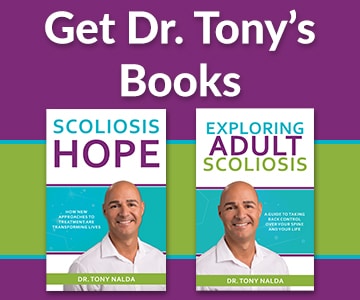 Ready to explore scoliosis treatment? Contact Us Now
Ready to explore scoliosis treatment? Contact Us Now